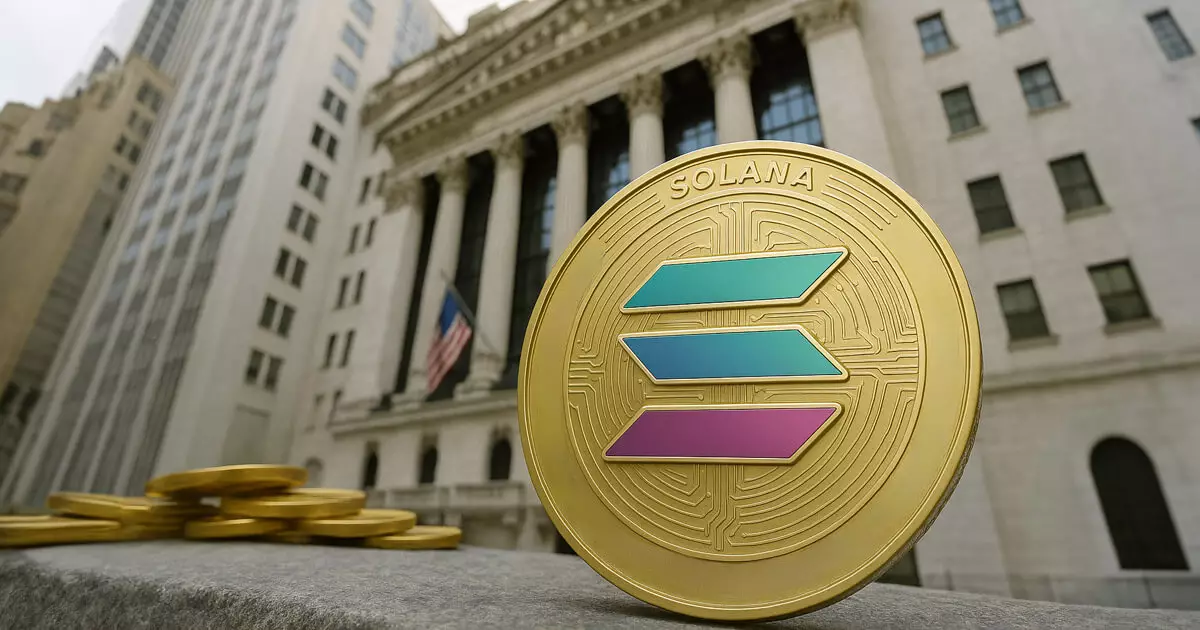Grayscale’s recent push to transform its Grayscale Solana Trust (GSOL) into a spot exchange-traded fund (ETF) represents a significant milestone in the cryptocurrency sphere. Filing a Form S-1 with the U.S. Securities and Exchange Commission (SEC) is not just a procedural step; it’s a calculated risk. Those following crypto trends recognize that ETFs could serve as a gateway for institutional capital, which is long overdue in an extremely volatile market. With the crypto world evolving, investors seem enthusiastic about a projected 83% chance of approval by year’s end, showcasing a growing appetite for regulated cryptocurrency products.
The SEC’s Role in Crypto Regulation
Maintaining a skeptical view of the SEC’s cautious approach under former Chair Gary Gensler is essential. His administration was notorious for its stringent regulations, which felt suffocating for many in the crypto community. Grayscale’s choice to adopt a conservative strategy, avoiding staking features in its proposed ETF, exemplifies the need for a regulated yet innovative avenue that could foster a more stable market. This apprehensive stance is arguably a double-edged sword; while it demonstrates a desire to comply with existing laws, it potentially misses out on lucrative yield opportunities associated with staking.
Risk and Reward of Staking
The absence of an official ruling on how registered broker-dealers can handle SOL coins inevitably places a ceiling on the ETF’s appeal. By opting out of staking, Grayscale is playing it safe, yet this could signify that it is unwilling to fully embrace the transformative potential of its asset class. Staking offers a compelling incentive for investors with promises of additional returns on their initial investments, drawing investors into long-term commitments instead of the mere short-term speculation that plagues many crypto assets today. The idea of staking becoming integral to ETFs, especially with the thought of integrating Ethereum and Solana, reflects a desire for growth in this sector of finance.
Historical Context and Market Sentiment
The momentum seen in Grayscale’s efforts can also be attributed to a gradual shift in market sentiment, especially with incoming leadership roles that may favor a more lenient regulatory framework. Cryptocurrencies have been subject to a lot of speculative narratives, but the evolving landscape provides hope for more structured financial products that could enhance the institutional legitimacy of crypto assets. As competitive technologies are assimilated into the mainstream, allowing for the adaptation of features like staking could open doors for innovative financial opportunities.
The Way Forward: Embracing Change Without Compromise
While the excitement surrounding Grayscale’s ETF journey is palpable, it is also important to navigate this landscape with discernment. The regulatory elements are not just roadblocks; they can serve as a necessary foundation for sustainable growth in the cryptocurrency space. As we keep an eye on the SEC and the final decisions regarding the Solana ETF’s approval, one can’t help but feel that aligning compliance with innovation will be critical in harnessing the full potential of what cryptocurrencies like Solana offer. The future appears promising, yet the path is strewn with complex challenges that demand astute navigation.














